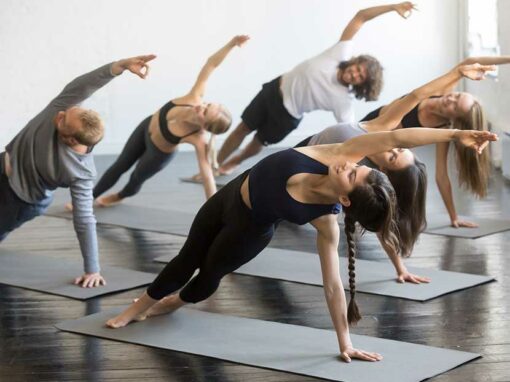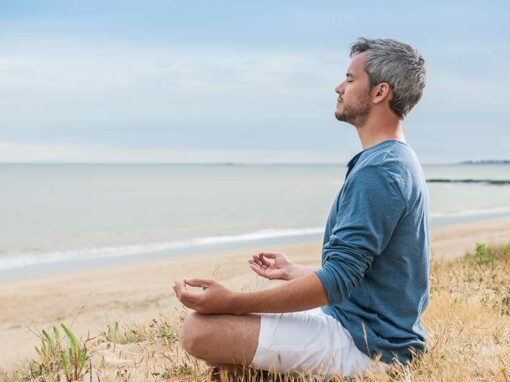Yoga Nidra – Everything You Want To Know
– Guest blog post by Marianna –
Let’s get a few pillows, maybe a bolster, a blanket, and an eye pillow if you like, and prepare yourselves for a Yoga Nidra session.
If you are not familiar with this practice, I will share what Yoga Nidra is and its benefits.
Origins
Yoga Nidra is a technique derived from ancient tantra, developed by Swami Satyananda during the 1940s.
He saw a deep need for simple techniques with great power to reduce stress and suffering.
He also recognized that directing your awareness to a specific part of the body would relax and recharge that area.
Indian mythological texts refer to Yoga Nidra as the state that occurs when the Indian god Vishnu sleeps. Universal creation is then Vishnu’s dream.


Meaning Of “Nidra”
‘Nidra’ means sleep in Sanskirt. Deep, dreamless sleep. It’s a powerful relaxation and meditation technique that induces deep body-mind relaxation to increase self-awareness.
The state of Yoga Nidra occurs when you can remain conscious during the state of deep sleep. It’s not a simple relaxation practice; ultimately, Yoga Nidra leads to a deep state of conscious sleep. It can be defined as a yogic sleep with awareness.
The purpose is to shift consciously from one state of consciousness to another, from waking to dreaming to sleeping.
How To Practice
Rolf Sovik, clinical psychologist and President of the Himalayan Institute, has studied yoga for many years in the United States, India, and Nepal, and particularly was taught Yoga Nidra by Swami Rama. According to him, the practice is guided through 5 stages:
1. Movement
In the beginning, some light movements can be performed as stretching the shoulders, the arms, twisting the back, or moving the hips and legs.
2. Exercise Without Movement
Next, lie down on the floor (as in Shavasana), and practice several repetitions without movement. This exercise is based on the idea that your brain signals your body to hold your legs, arms, abdominal area on tension and then to release.
This practice gives you a taste that it’s possible to shift the mind from place to place in the body. Besides, it helps to develop an awareness of how the mind is capable of doing that shifting to create tension and then relax.
3. Systematic Relaxation
The third step is to relax. The relaxations are taught very systematically:
- Through 61 points of body relaxation, which is called Shavayatra.
- Through 75 breaths practices, which is called Shitili Karana.
These two relaxation exercises are done following the tension exercises that enable you to relax extremely deep.
4. Breath Awareness Practice
This step requires you to feel the breath through one nostril on one side of the body and then the other side.
5. Sleep With Awareness (Yoga Nidra)
In this final stage, you let awareness travel from the high brow center, to the throat center, to the heart center, and you instruct your mind and body to sleep consciously.


A full practice might take an hour and a half to accomplish, at which end your body and mind will be deeply relaxed.
That journey from waking to deep sleep is the content of Yoga Nidra.
Yoga Nidra Is For Everybody
Anyone can practice Yoga Nidra, especially those who struggle to let go, those suffering from sleep deprivation, anxiety, or depression.
However, please be aware that it’s always good to check first with your doctor, especially if you struggle with severe trauma or depression, and practice yoga Nidra with experienced teachers.
Yoga Nidra is a practice of healing, kindness, and surrender.
Are you ready for your next Yoga Nidra class?
Marianna has been practicing Yoga for more than eight years, and in 2020
she completed the 200h Yoga Teacher Training in Vinyasa at YogaMoves in Utrecht.
She is passionate about sharing Yoga with others, living more sustainably,
and traveling. Her INSTAGRAM page: https://www.instagram.com/greenyogawithme/




